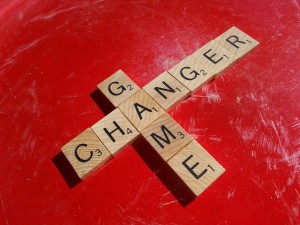Let my playing be my learning, and my learning be my playing. -Johan Huizinga
Games and play are typically overlooked (Prensky, 2001) by many as a way for students to learn. As defined by Sharp (2012), stealth learning is “when an instructor uses clever, disguised ways to introduce learning objectives through non-traditional tools, such as games, to encourage students to have fun and learn”. Game-based learning allows teachers to incorporate ‘stealth learning’ in the classroom. Like game-based learning, gamification is a way to infuse play into the classroom. Gamification is “applying typical elements of game playing (e.g., point scoring, competition with others, rules of play) to other areas of activity” (Davis, 2014).
Based on Prensky (2001), game based learning can be used for:
- Material that is dry and/or technical
- Challenging subject matter
- Audiences that are hard to reach
- Developing critical thinking skills
- Strategy development and communication.
Some of the benefits of gaming in the classroom include increased memory, class performance, social benefits, and improving the transfer of learning (Sharp, 2012). The social benefits of play include building social competence and confidence in dealing with peers (Singer et al., 2006). Playing games is also essential to children’s ability to regulate their behaviors and emotions (Singer et al., 2006). By playing games, students learn that rules are a part of our daily lives (Sharp, 2012). However, unstructured playtime may be limited in today’s standards and outcomes driven classrooms. For example, some schools have reduced or cut out recess altogether, while others have reduced lunch break hours. Interestingly enough, a Quebec elementary school has introduced a one-year pilot project on a near-complete ban on homework, with the goal to ease pressure on parents and to improve student performance (Shingler, 2014).
Resources:
- Best Educational Board Games for Kids – This article provides good recommendations for games across all age ranges, from early learners to high school students.
- Game-Based Learning: Resource Roundup – Edutopia– This section of Edutopia categorizes all their articles and resources that are related to game-based learning.
- Games for Change – The mission of Games for change is to be a catalyst for social impact through educational games. Many of these games provide thought-provoking and even challenging or troubling scenarios for discussion.
- 100 Great Game Based Learning and Gamification Resources – This website contains 100 game-based and gamification resources. Some of the articles are based on research, while other articles offer varying perspectives and ideas.
- Things to consider (from Science Education Resource Centre at Carleton College)
References:
Davis, V. (2014). A Guide to Game-Based Learning. Retrieved 5 December 2014, from http://www.edutopia.org/blog/guide-to-game-based-learning-vicki-davis
Prensky, M. (2001). Digital Game-Based Learning. Retrieved from http://www.marcprensky.com/writing/Prensky%20-%20Ch1-Digital%20Game-Based%20Learning.pdf
Sharp, L. (2012). Stealth Learning: Unexpected Learning Opportunities Through Games. Journal of Instructional Research, 1, 42-48. Retrieved from https://cirt.gcu.edu/jir/documents/2012-v1/sharppdf
Shingler, B. (2014). Less work, more play: Quebec elementary school bans homework for the year. Retrieved 9 December 2014, from http://www.theglobeandmail.com/news/national/less-work-more-play-quebec-elementary-school-bans-homework-for-the-year/article20295710/
Singer, D. G., Golinkoff, R. M., Hirsh-Pasek, K., & MyiLibrary. (2006). Play=learning: How play motivates and enhances children’s cognitive and social-emotional growth. Oxford; New York: Oxford University Press.


 Follow
Follow